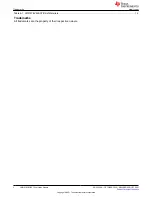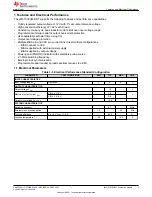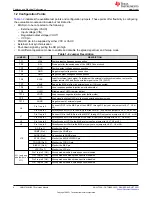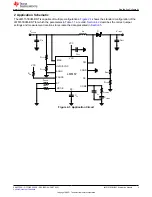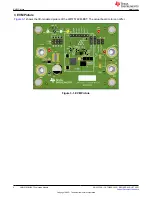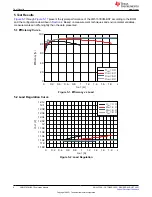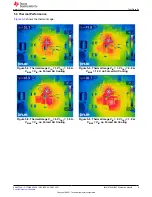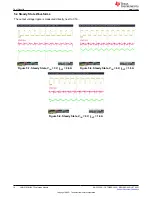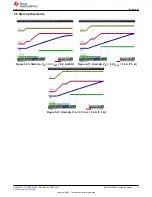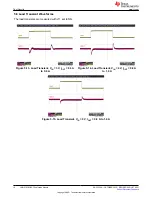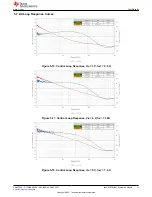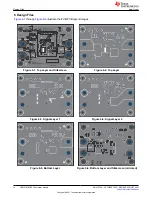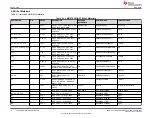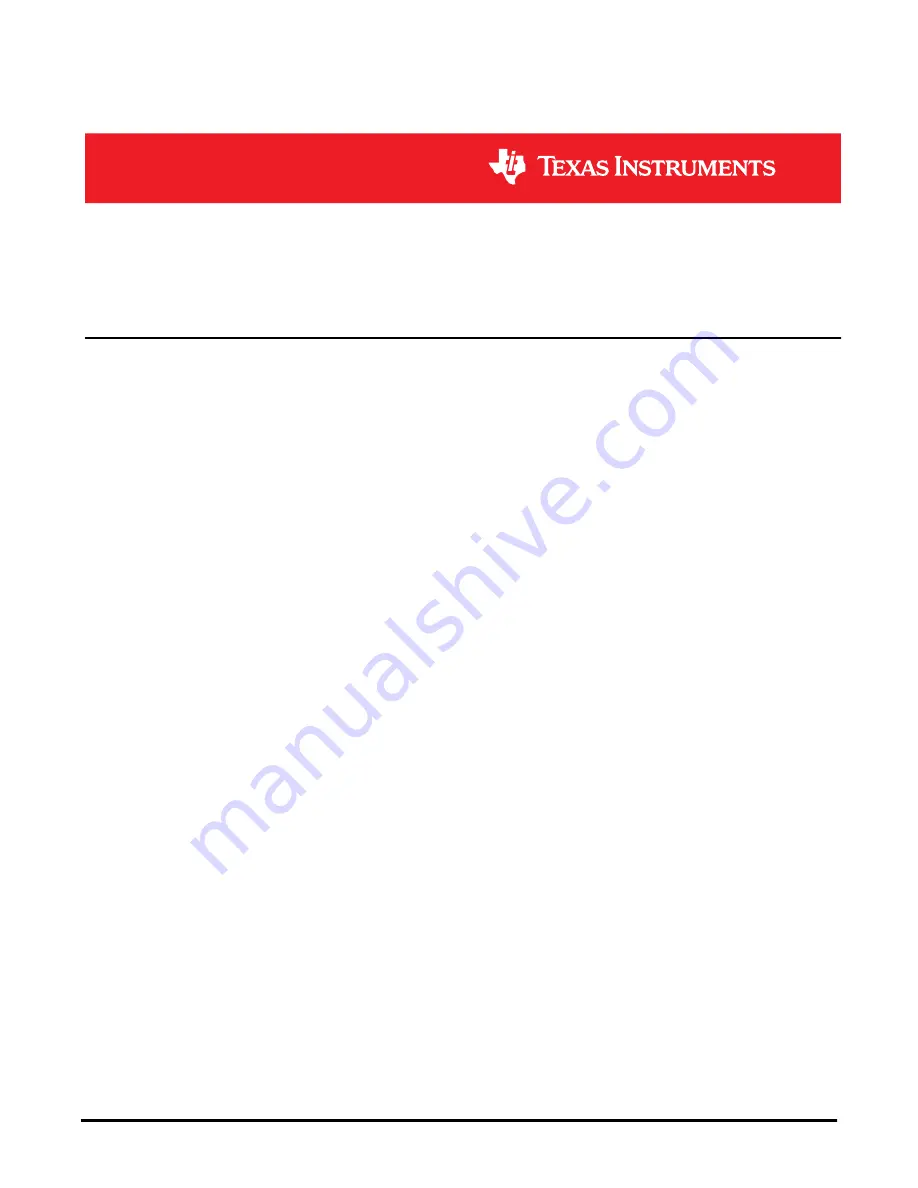
User’s Guide
LM5157EVM-BST Evaluation Module
ABSTRACT
The LM5157EVM-BST evaluation module showcases the features and performance of the LM5157 device
as wide input voltage, non-synchronous boost converter with dual random spread spectrum. The standard
configuration is designed to provide a regulated output of 12 V at 1.6 A from an input of 3 V to 9 V (load derated
for input voltages below 6 V), switching at a frequency of 2.1 MHz.
Table of Contents
1 Features and Electrical Performance
...................................................................................................................................
3
2 Application Schematic
...........................................................................................................................................................
5
3 EVM Picture
.............................................................................................................................................................................
6
4 Test Setup and Procedure
......................................................................................................................................................
7
5 Test Results
.............................................................................................................................................................................
8
6 Design Files
...........................................................................................................................................................................
14
7 Revision History
...................................................................................................................................................................
18
List of Figures
Figure 2-1. Application Circuit......................................................................................................................................................
5
Figure 3-1. EVM Picture..............................................................................................................................................................
6
Figure 4-1. Test Setup.................................................................................................................................................................
7
Figure 5-1. Efficiency vs Load......................................................................................................................................................
8
Figure 5-2. Load Regulation........................................................................................................................................................
8
Figure 5-3. Thermal Image V
IN
= 3 V I
OUT
= 0.6 A, V
BIAS
= V
IN
, no Forced Air Cooling..............................................................
9
Figure 5-4. Thermal Image V
IN
= 3 V I
OUT
= 0.6 A, V
BIAS
= 12 V, no Forced Air Cooling............................................................
9
Figure 5-5. Thermal Image V
IN
= 6 V I
OUT
= 1.6 A, V
BIAS
= V
IN
, no Forced Air Cooling..............................................................
9
Figure 5-6. Thermal Image V
IN
= 9 V I
OUT
= 1.6 A, V
BIAS
= V
IN
, no Forced Air Cooling..............................................................
9
Figure 5-7. Steady State, V
IN
= 3 V, I
OUT
= 0.6 A......................................................................................................................
10
Figure 5-8. Steady State, V
IN
= 6 V, I
OUT
= 1.6 A......................................................................................................................
10
Figure 5-9. Steady State, V
IN
= 9 V, I
OUT
= 1.6 A......................................................................................................................
10
Figure 5-10. Start-Up, V
IN
= 3 V, I
OUT
= 0.6 A (20 Ω).................................................................................................................
11
Figure 5-11. Start-Up, V
IN
= 6 V, I
OUT
= 1.6 A (7.5 Ω)................................................................................................................
11
Figure 5-12. Start-Up, V
IN
= 9 V, I
OUT
= 1.6 A (7.5 Ω)................................................................................................................
11
Figure 5-13. Load Transient, V
IN
= 3 V, I
OUT
= 0.3 A to 0.6 A....................................................................................................
12
Figure 5-14. Load Transient, V
IN
= 6 V, I
OUT
= 0.8 A to 1.6 A....................................................................................................
12
Figure 5-15. Load Transient, V
IN
= 9 V, I
OUT
= 0.8 A to 1.6 A....................................................................................................
12
Figure 5-16. Control Loop Response, V
IN
= 3 V, I
OUT
= 0.6 A...................................................................................................
13
Figure 5-17. Control Loop Response, V
IN
= 6 V, I
OUT
= 1.6A....................................................................................................
13
Figure 5-18. Control Loop Response, V
IN
= 9 V, I
OUT
= 1.6 A...................................................................................................
13
Figure 6-1. Top Layer and Silkscreen........................................................................................................................................
14
Figure 6-2. Top Layer.................................................................................................................................................................
14
Figure 6-3. Signal Layer 1.........................................................................................................................................................
14
Figure 6-4. Signal Layer 2.........................................................................................................................................................
14
Figure 6-5. Bottom Layer...........................................................................................................................................................
14
Figure 6-6. Bottom Layer and Silkscreen (mirrored)..................................................................................................................
14
Figure 6-7. LM5157EVM-BST Schematic..................................................................................................................................
15
List of Tables
Table 1-1. Electrical Performance Standard Configuration..........................................................................................................
3
Table 1-2. Jumper Description.....................................................................................................................................................
4
Table 4-1. Standard Configuration Jumper Connections.............................................................................................................
7
www.ti.com
Table of Contents
SNVU739A – OCTOBER 2020 – REVISED AUGUST 2021
Submit Document Feedback
LM5157EVM-BST Evaluation Module
1
Copyright © 2021 Texas Instruments Incorporated



